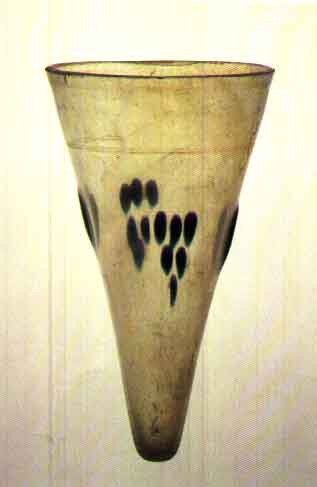
Late in the third quarter of the first century BCE, the world's first glassblower made the first Cone Lamp. It probably used olive oil with a cork floating a small wick. Early Humans had never set eyes upon such a glowing, jewel-like creation. The idea really caught on and was the main product of glassblowers for the next 700 years, with Lamps being exported all over the Roman Empire. The fall of the empire resulted in near extinction of the Cones, hence the onset of the Dark Ages. A few originals do survive, mostly in museums (who never light them).
The use of Cone Lamps was lost for 1200 years, until, in 1988, a small workshop in southwest Scotland re-invented the lamp, together with a much improved burner and heat-proof glass. This rapidly spawned a range of brackets, stands, and chandeliers which in turn inspired a range of architecture from tree houses to cafes, restaurants, gazebos and gardens which were a guide to the people of the 21st century towards a simpler and closer relationship between themselves, the environment, and the fire, with which the world was being incinerated.
"Ingenious, one of the few truly enlightening inventions of the modern age." Thomas Edson